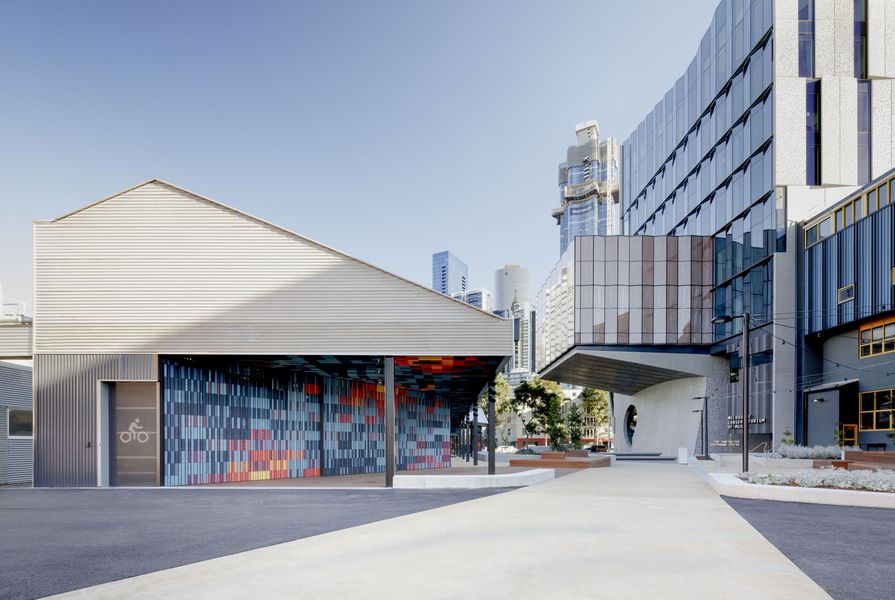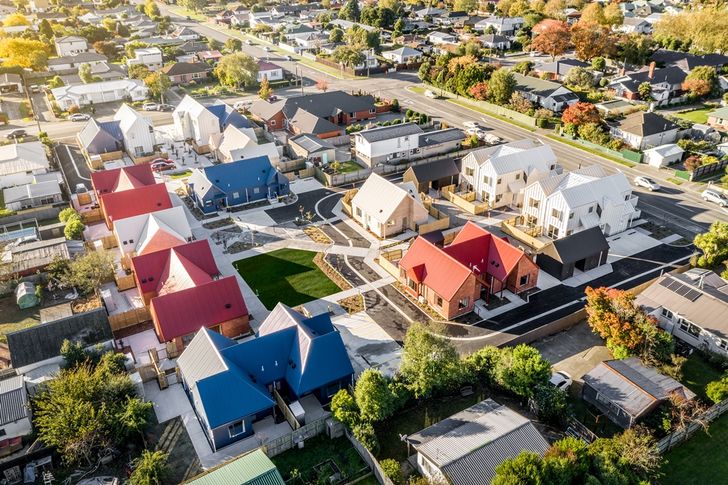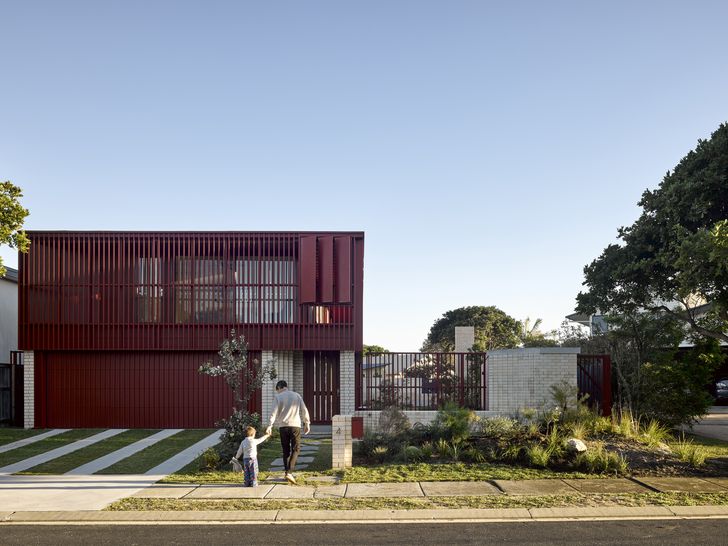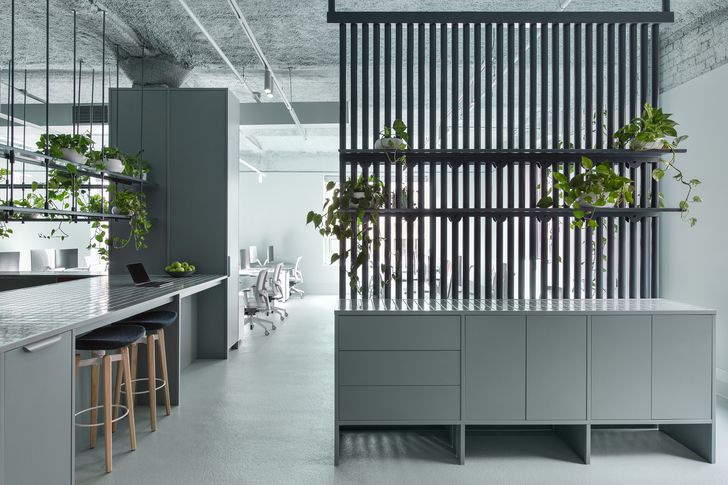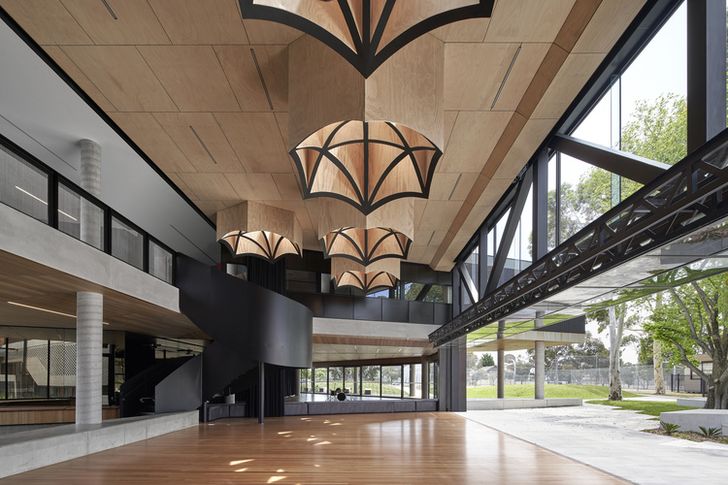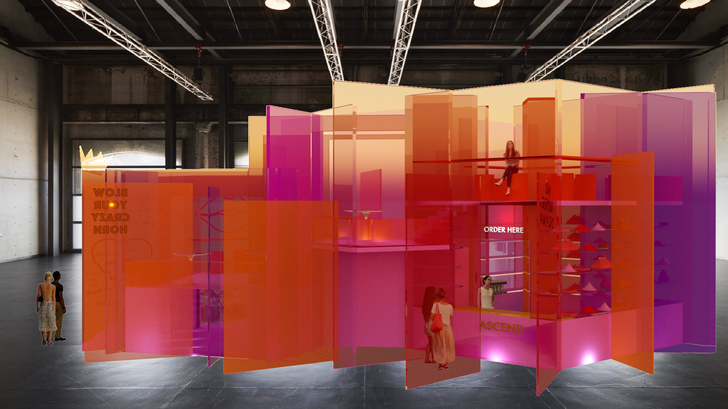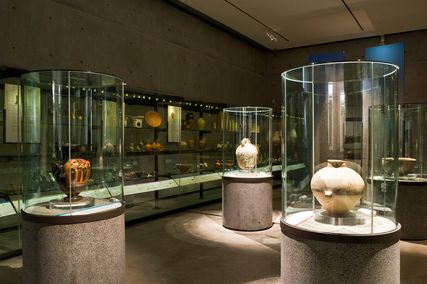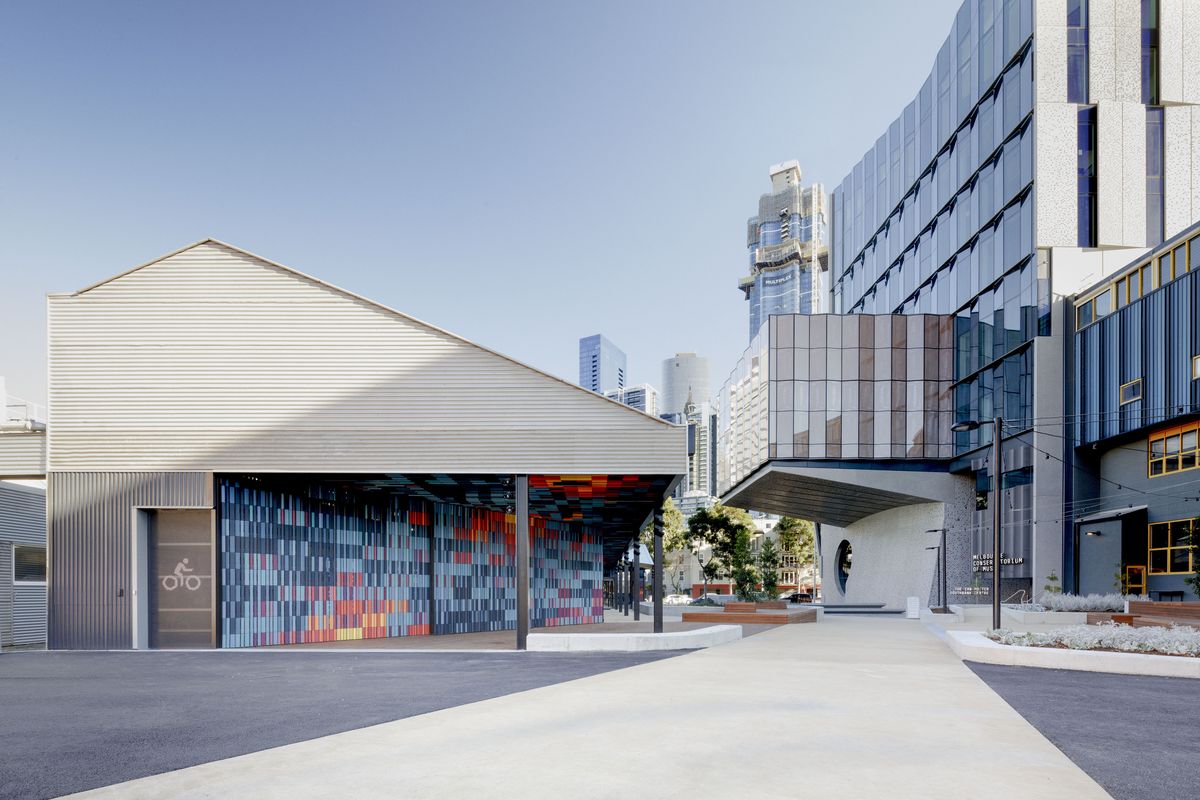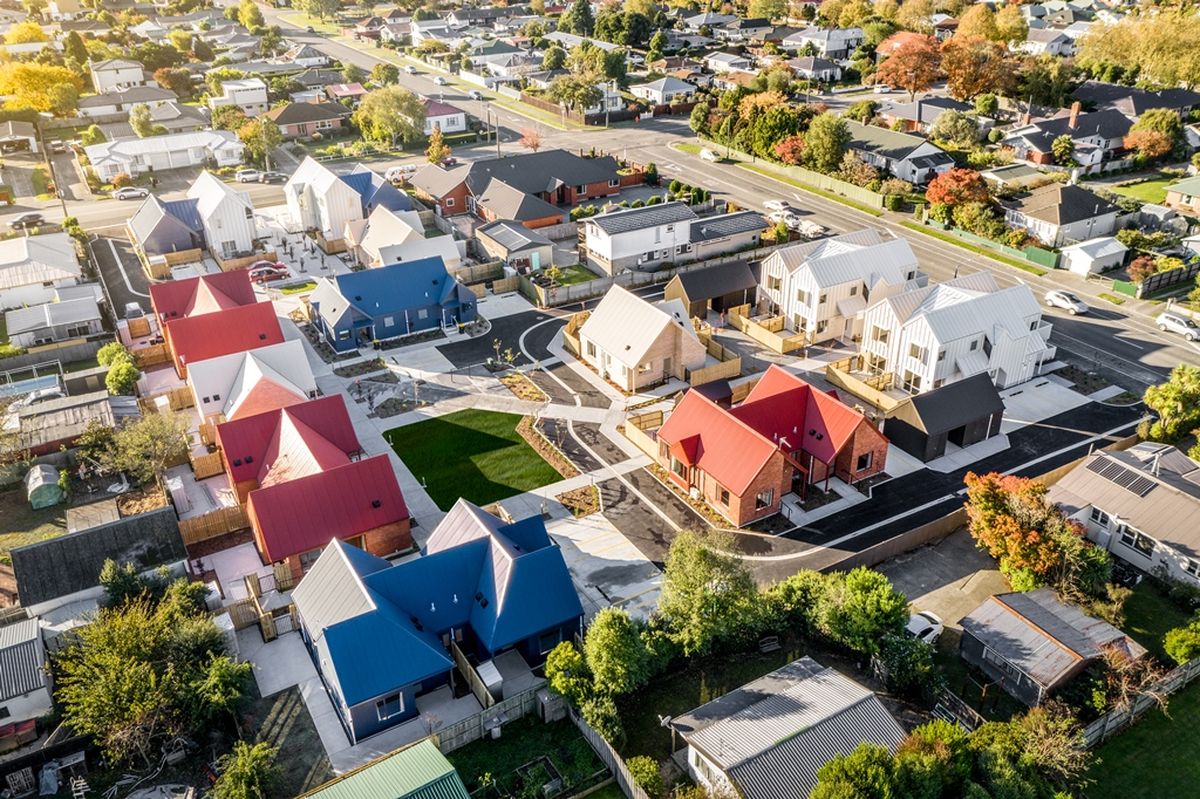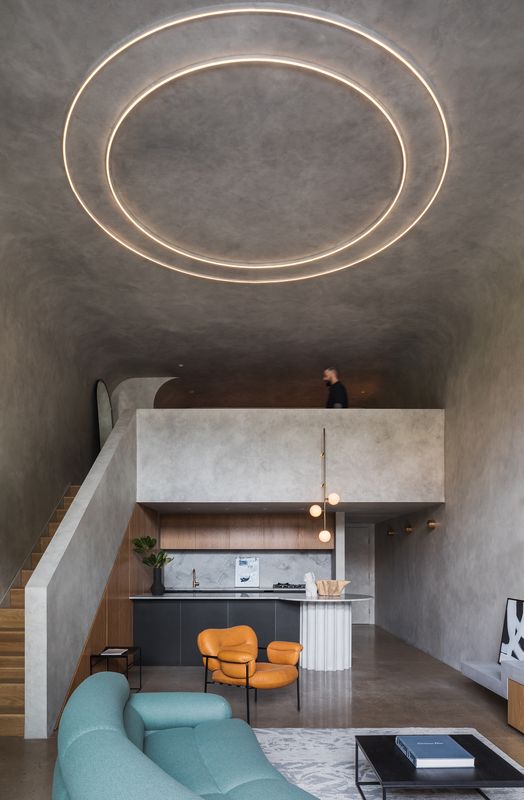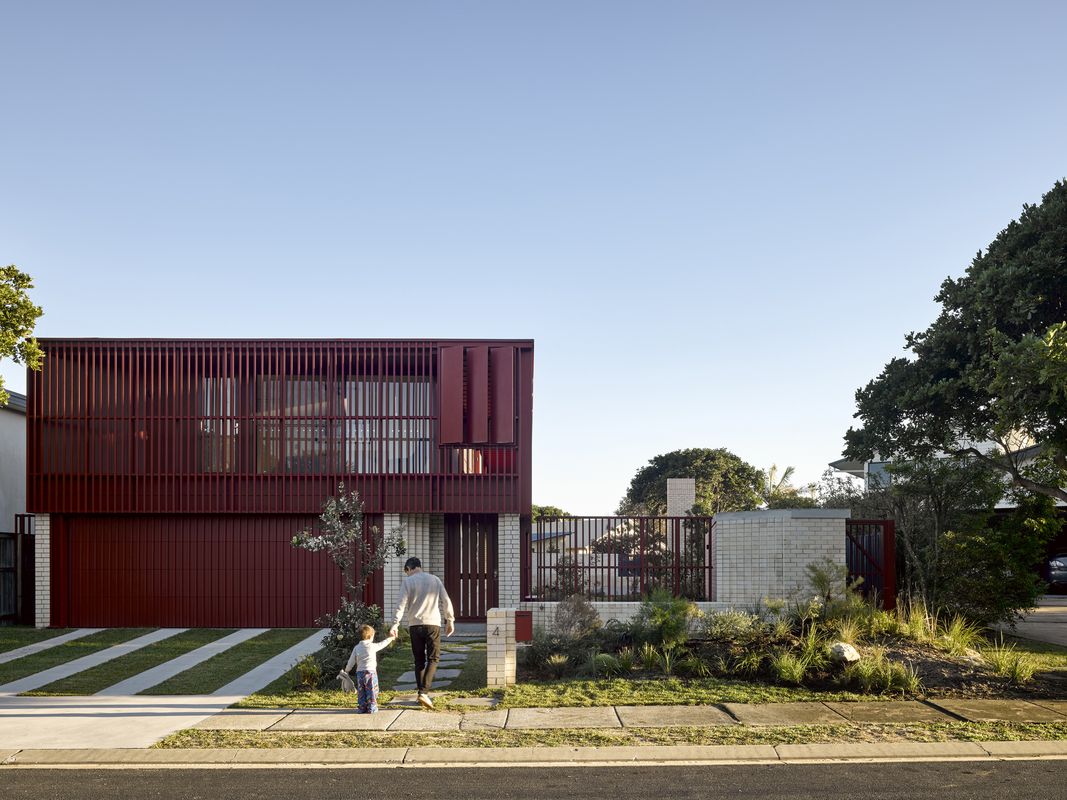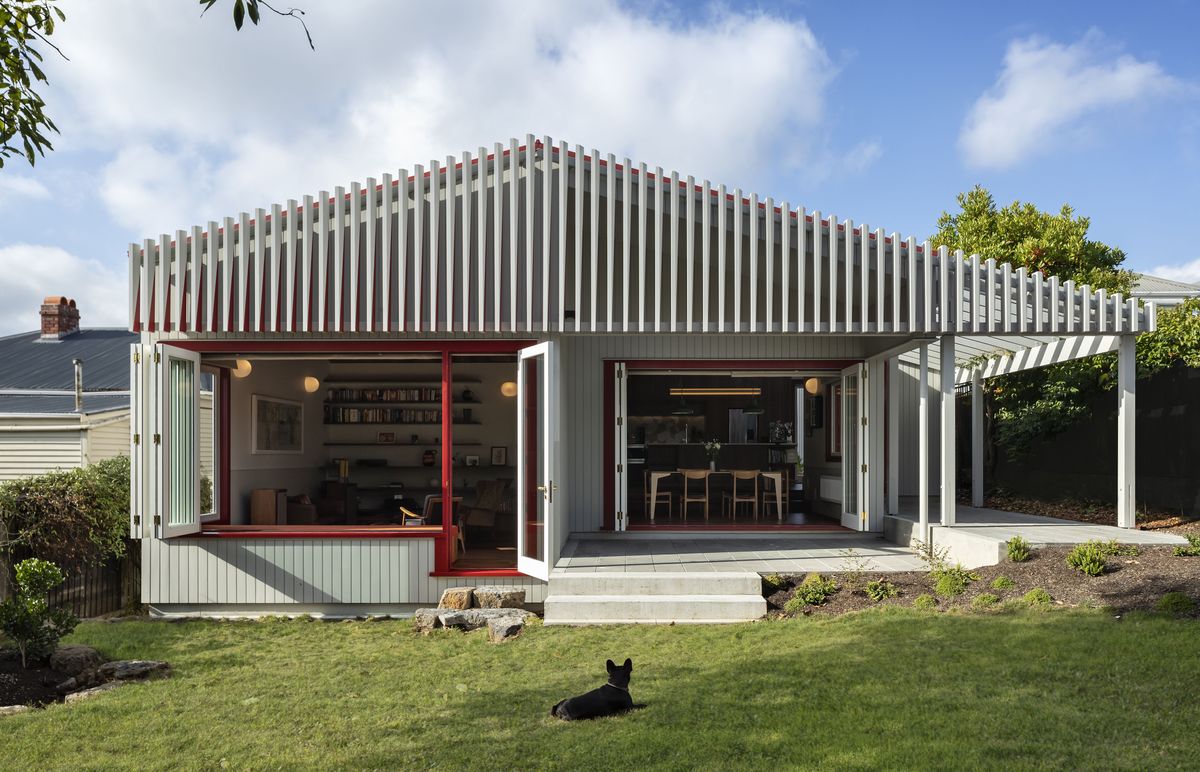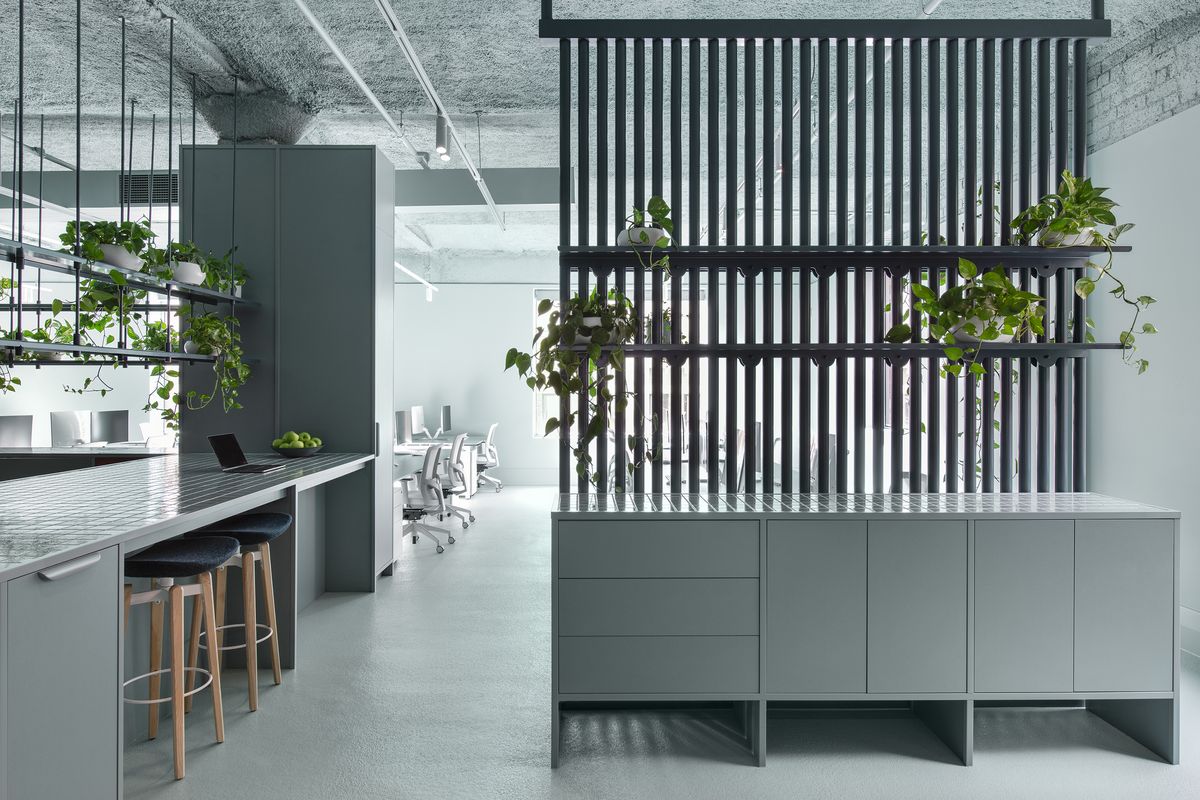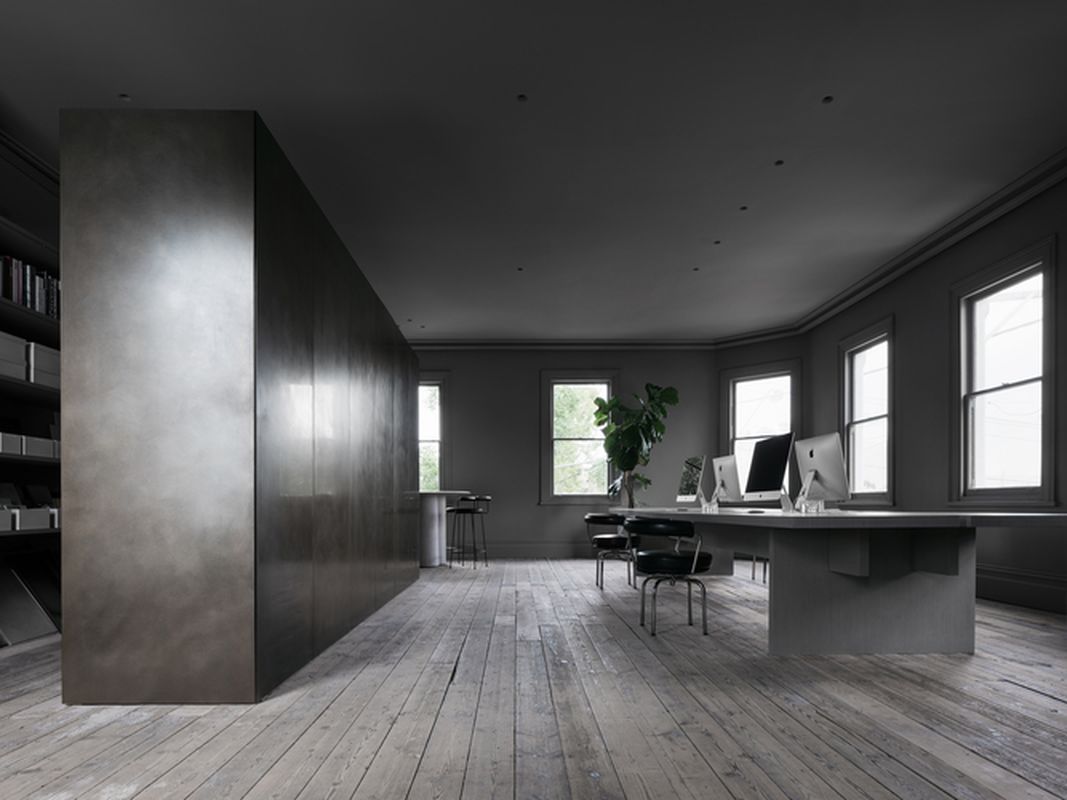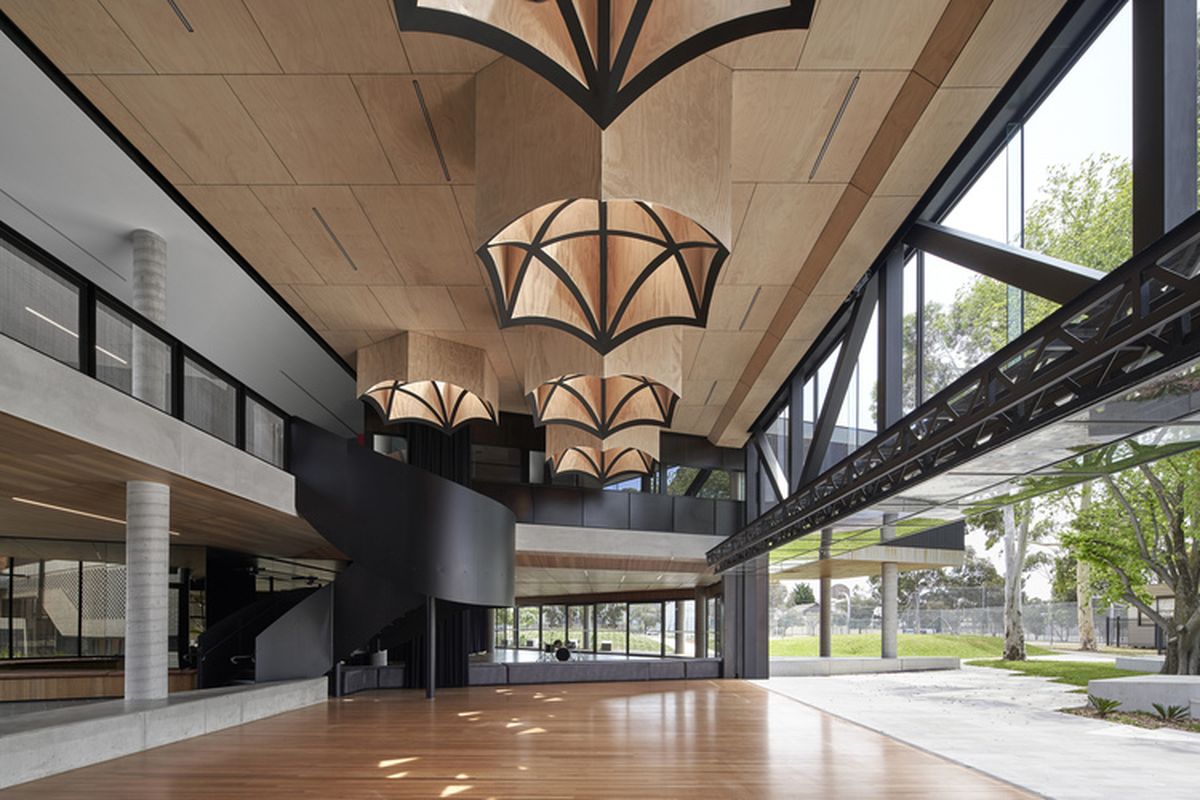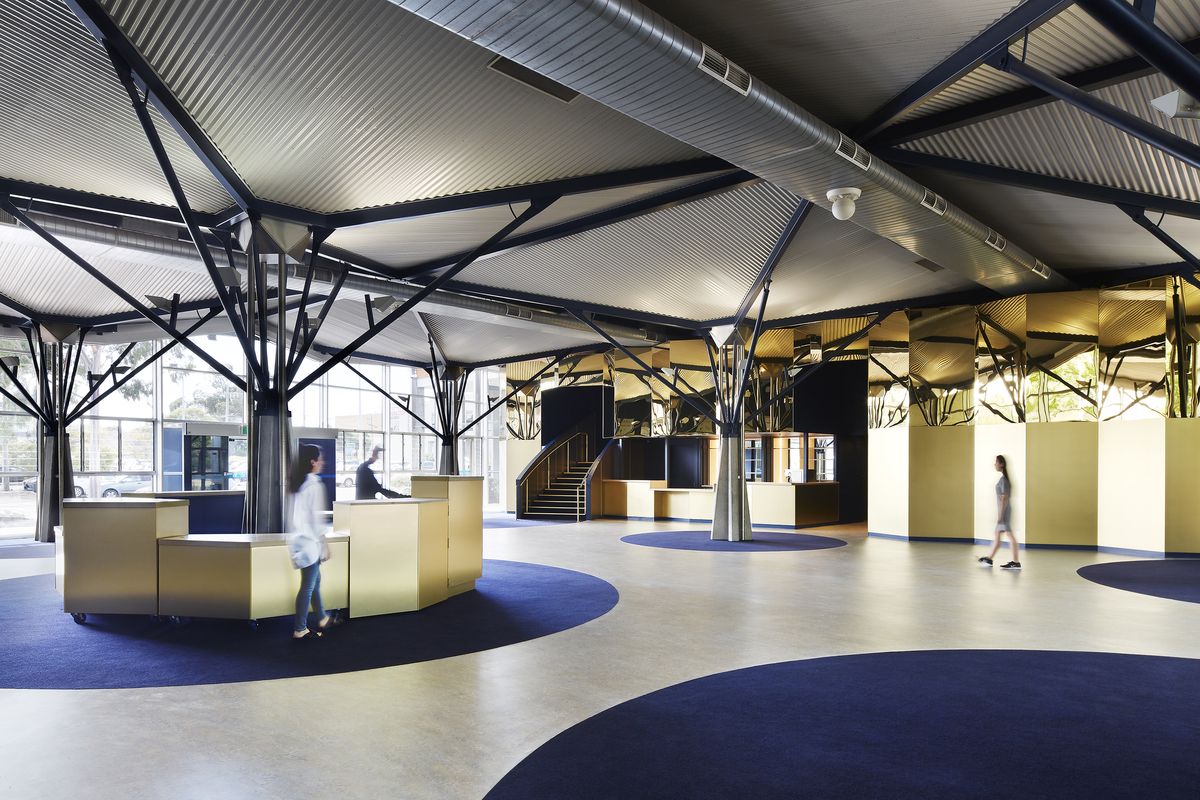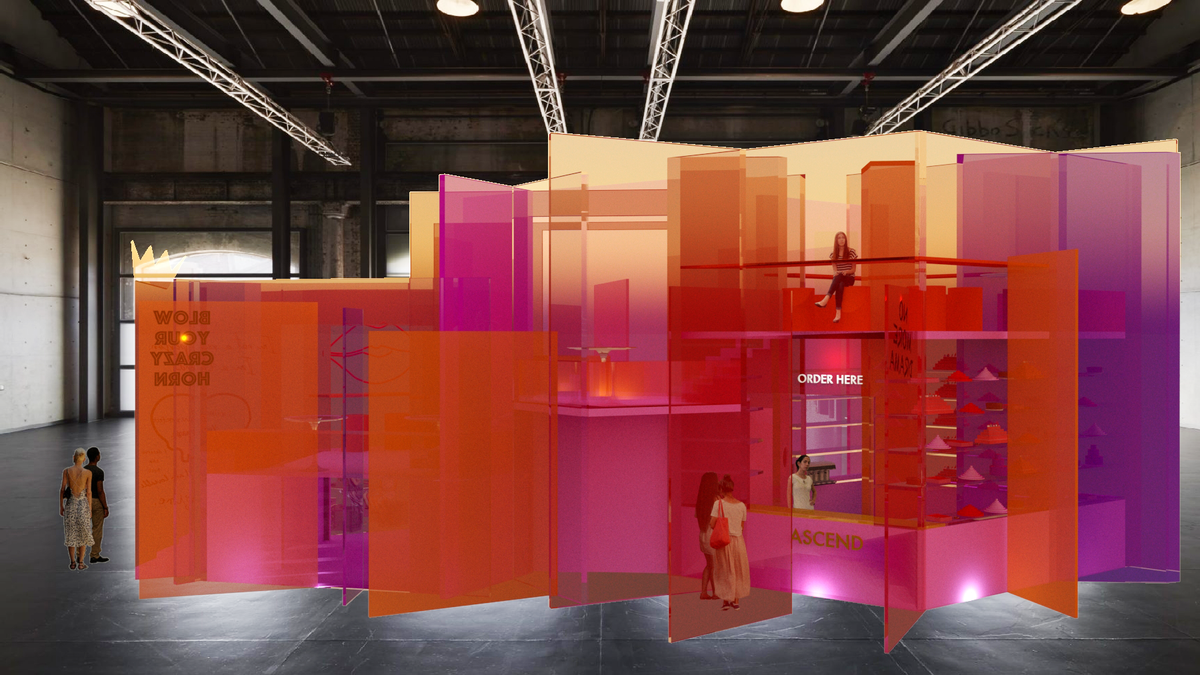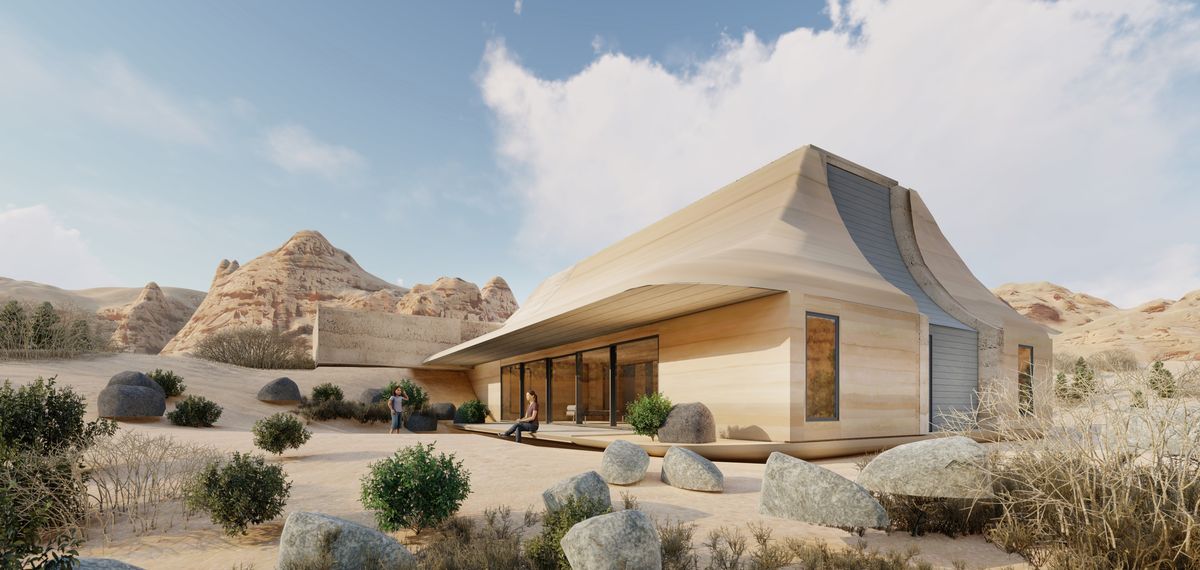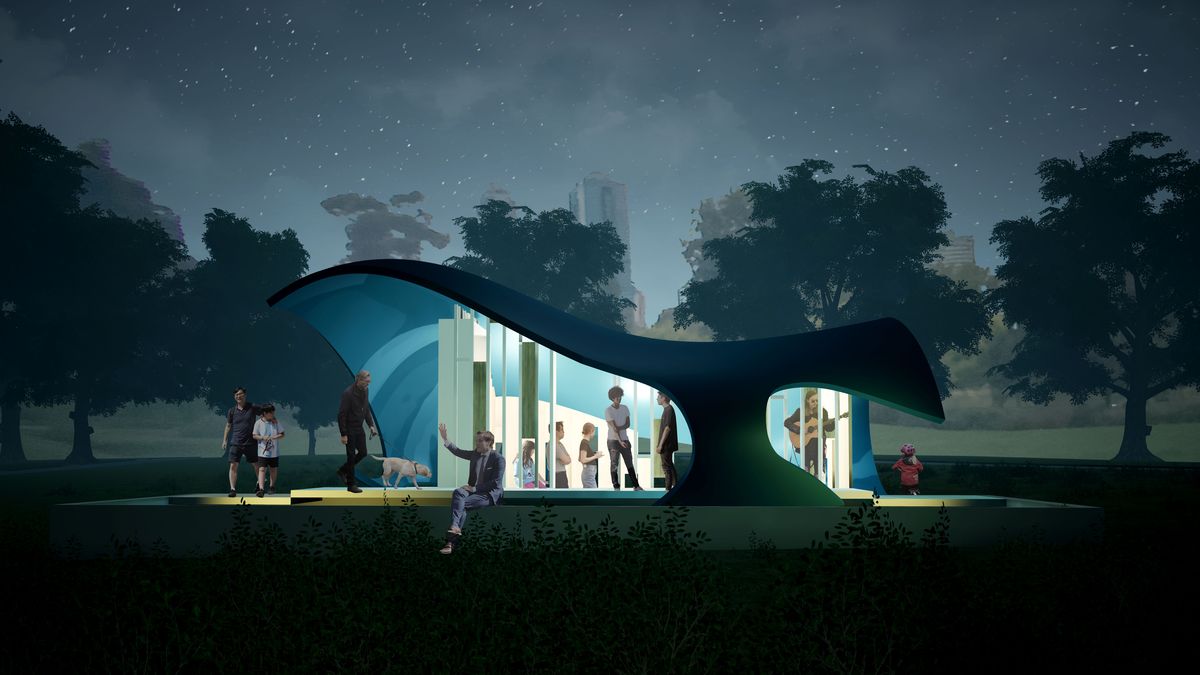A utilitarian end-of-trip facility enlivened with fourteen different colours has won the Australian Grand Prix in the 2020 Dulux Colour Awards.
Searle Waldron Architecture took home the top prize for its University of Melbourne Southbank End of Trip project. The New Zealand Grand Prix went to Rohan Collett Architect for Social Housing Development Rangiora, a genre-busting project defined by “purposeful irregularity.”
“We are usually spoiled with extraordinarily creative colour use in private and commercial applications, but to see that same level of ambition and execution in public works signifies an increased recognition of the universal role colour can play in spatial experiences,” said the judges.
Now in its 34th year, the Dulux Colour Awards program recognizes the most cutting-edge and creative applications of colour in Australia and New Zealand across six categories of architecture and design. This year’s awards attracted more than 450 entries across both countries.
“The level of sophistication, creativity and masterful use of colour continues to rise each year,” said Dulux colour and communications manager Andrea Lucena-Orr. “Architects and designers are becoming increasingly bold and adept at employing paint as an integral element in the design of both internal and external spaces and this is evident across all the winning projects.”
The winners are:
Grand Prix Australia winner and Commercial and Multi-residential Exterior winner
University of Melbourne Southbank – End of Trip – Searle Waldron Architecture
Judges’ comments: “Ambitious in its conception and labour intensive in its realisation, this project stood out from the start. As an end-of-trip destination with bike storage and changerooms, its program is utilitarian, yet the architects approached it as an opportunity for broader engagement with the surrounding elements. It is a credit to them that they conceived of such a complex palette, comprising no less than 14 Dulux hues, and executed it so successfully. The random, pixelated effect of the thousands of painted battens is intricate like a woven textile, ever- changing under different light conditions. It draws one into the space and, as the architects state, “affirms its specific civic arts identity through creativity and colour”. We are in awe of the outcome.”
Grand Prix New Zealand winner
Social Housing Development Rangiora by Rohan Collett Architect.
Image: Lightforge - Dennis Radermacher
Social Housing Development Rangiora – Rohan Collett Architect
Judges’ comments: “The uniformity and blandness that plagues much of the social-housing genre has been cleverly avoided in this highly considered multi-residential project for individuals over 55. With colour as a key tool, individual homes have been given unique identities while still visually integrating into the surrounding area as a whole. Colour has also been employed as a navigational device across the site. But it is the fine balance between cohesion and what the architect describes as “purposeful irregularity” in the application of the palette across the 28 units that is to be commended; there is just enough similarity in the hues of the facades for the village to identify as a whole and, on the flip side, just enough individuality for it not to slip into bland uniformity. This is a genre-busting project, worthy of high praise.”
The project also received a commendation in the Commercial and Multi-residential Exterior category.
Single Residential Interior
Perfect Storm by Green Anvil Co, Killing Matt Woods and Set for Art.
Image: Katherine Lu
Winner
Perfect Storm – Green Anvil Co, Killing Matt Woods and Set for Art
Judges’ comments: “Avoiding the ubiquitous industrial cliché, this warehouse renovation is instead a Brutalist– inspired marvel. Its minimalism and clean, clutter-free aesthetic signals a commitment to the vision by both the clients and their design team. The use of a single colour and finish, with the appearance of concrete, on all painted surfaces has a surprisingly warm cocooning effect, which is amplified by the soft curve where walls meet ceilings. It is utilitarian chic at its best – intimate, moody, balanced – and awarded for its simplicity and singularity.”
Commendation
Ruckers Hill House – Studio Bright
Single Residential Exterior
Casuarina House by Vokes and Peters Image:
Christopher Frederick Jones
Winner
Casuarina House – Vokes and Peters
Judges’ comments: “Impactful in its simplicity, this new family home responds to its coastal setting by promoting an outdoor lifestyle and facilitating an easy flow between inside and out. Its Capsicum Red-painted external timbers and the sandy brickwork and masonry elements are perfectly balanced and contrast strikingly with the native foliage. Described by the architects as bright and defiantly modern when hit by the direct sun, the statement red exterior becomes subdued and moody when shaded, transforming the architectural expression from day to night. Overall, this is a bold design of unwavering commitment that exudes warmth and depth through colour and texture.”
Commendation
Split House – Pac Studio
Commercial Interior: Workplace and Retail
Armitage Jones by Bergman and Co.
Image: Nicole England
Winner
Armitage Jones – Bergman and Co
Judges’ comments: “Barely recognisable as a workplace and more akin to a contemporary hospitality venue, this highly refined ‘office’ space is a typological hybrid in which colour plays the pivotal role. Spilling over surfaces and paired with materials, colour saturates every space, delineating zones and creating distinct moods. The red seating pod, where the carpet is matched to the paint, is one example of this execution. Underpinning the entire scheme is a cool grey that is key to the strategy’s success; if it were another colour, the space wouldn’t have the same feeling. It takes on different appearances where it adjoins the accent colours of muddy burgundy and muted gold, yet gently dominates and draws one into the areas where it has been uniformly adopted.”
Commendation
Adam Kane Architects Office – Adam Kane Architects
Commercial Interior: Public and Hospitality
Arts Epicentre by Branch Studio Architects.
Image: Peter Clarke
Winner
Arts Epicentre – Branch Studio Architects
Judges’ comments: “The impact and sophistication of this interior set it apart and totally fulfil the architects’ aim to conceive of it more as a public performing arts facility than a school building. Its sculptural elements are striking in themselves, but the accentuation of their curvaceous forms by strong black outlines or full swathes of the hue on structural components like the stairs, is masterful. It appears as though ribbons of black are twisting through the space, orientating and guiding people through it in the most seductive fashion. It is no coincidence that this architectural triumph is a hub for the creative arts – theatre, music, fine art, and so on – for it is nothing short of dramatic.”
Commendation
Darebin Arts Centre – Sibling Architecture
Student
Ascend by Louise Mackay, Sydney Design School.
Winner
Ascend – Louise Mackay, Sydney Design School
Judges’ comments: “A nod to the Queen Victoria M Pavilion, this free-standing pod incorporates a VR engine designed to simulate colour’s effects on a person. Its reflective blue chromatic exterior sits well with its surroundings while cocooning those within. It is a sophisticated high-tech concept, in which the student has considered the effects of colour across a whole day, and its execution could be quite magical.”
Commendations
Hump House – Ying Ho Shiu (Hiro), RMIT
Queen Victoria Pavilion – Michael Ren, The University of Melbourne

